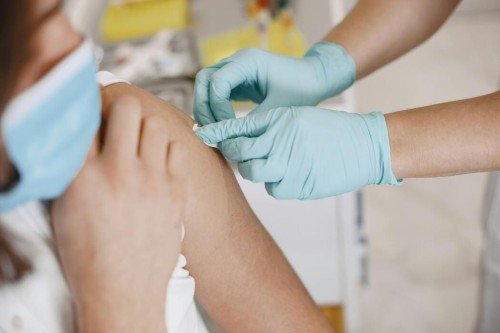
Vaccines have always been one of humanity’s greatest medical achievements. They’ve eradicated diseases, extended life expectancy, and saved countless lives across generations. Yet, the science of vaccination is not static — it evolves continuously, driven by innovation, technology, and the lessons learned from global health challenges like COVID-19.
Today, vaccines are more than a biological defense system; they are the result of a multidisciplinary collaboration between molecular biology, data science, artificial intelligence, and international policy. Understanding how far vaccine science has come — and where it’s heading — helps us see the future of medicine with greater clarity and optimism.
From Smallpox to Synthetic Biology
The story of vaccines began more than two centuries ago, with Edward Jenner’s smallpox inoculation in 1796. That breakthrough marked the beginning of immunology — the study of how the body learns to defend itself. Since then, science has evolved from crude exposure techniques to precision biotechnology.
Traditional vaccines used weakened or inactivated pathogens to trigger the body’s immune response. Modern vaccines, however, rely on far more sophisticated tools — recombinant DNA, messenger RNA, and viral vector platforms. These methods are not only safer but also faster to produce and easier to adapt to new variants.
The COVID-19 pandemic accelerated this transformation. What would once take ten years — from research to approval — was achieved in less than one. Scientists worldwide collaborated across borders and shared genomic data in real time, proving that global health progress depends as much on communication as on technology.
The Rise of mRNA Technology
One of the greatest breakthroughs of the 21st century has been the development of mRNA vaccines. Rather than injecting a weakened virus, these vaccines teach cells to produce a harmless piece of the virus’s protein, which then triggers an immune response.
This method revolutionized the speed of vaccine creation. Once scientists have the genetic code of a virus, they can design an mRNA vaccine within weeks. Beyond COVID-19, this technology is now being explored for a range of diseases — from influenza to HIV, malaria, and even certain types of cancer.
Researchers are also studying how to combine mRNA with nanotechnology for more targeted delivery systems. The future could bring personalized vaccines designed for individual immune profiles, ushering in a new era of precision medicine.
Global Collaboration and Information Sharing
The pandemic demonstrated that no nation can tackle global health threats alone. International cooperation, data transparency, and rapid communication are the foundations of vaccine progress.
Scientific collaboration depends heavily on open access to data, peer-reviewed research, and multilingual communication. Institutions and health organizations around the world must coordinate policies, share trial results, and harmonize safety standards.
This global exchange of information parallels the way digital ecosystems operate — where visibility and trust are built through shared authority and reliable sources. In a digital sense, a link building agency plays a similar role to that of scientific collaboration in healthcare: it connects reliable content, builds trust through reputable networks, and amplifies credibility. Just as vaccines rely on verified data, online information must also be credible, interconnected, and traceable to earn public confidence.
AI and Data-Driven Vaccine Research
Artificial intelligence (AI) is transforming how vaccines are discovered and developed. Machine learning algorithms can analyze millions of data points — genetic sequences, immune responses, infection rates — to identify potential vaccine targets in record time.
AI systems also help model how viruses evolve, allowing scientists to anticipate mutations and design broader, more resilient immunizations. The predictive power of AI shortens research timelines, reduces costs, and increases safety by identifying potential side effects before clinical trials begin.
Pharmaceutical companies now operate in data-rich environments, where every variable — from molecular behavior to population demographics — contributes to the optimization of vaccine design.
Manufacturing and Distribution Innovations
Scientific progress doesn’t end in the lab. Manufacturing and distribution are equally critical to vaccine success. During COVID-19, global supply chains were tested like never before. Shortages of raw materials, complex cold-chain logistics, and regulatory bottlenecks exposed weaknesses in the system.
Since then, new models have emerged. Modular vaccine production facilities, decentralized manufacturing hubs, and 3D-printed bioreactors are helping make vaccine distribution faster and more flexible. Many low- and middle-income countries are now developing their own vaccine manufacturing capabilities, reducing dependence on imports and ensuring better preparedness for future outbreaks.
The Ethics of Vaccine Development
As vaccine science advances, ethical questions grow more complex. Who decides which populations receive early access? How can governments ensure that clinical trials are fair and inclusive? And how can we balance innovation with transparency when dealing with public trust?
The answer lies in communication and accountability. Scientific transparency must be accompanied by clear, accessible public information. Social trust is as essential to vaccination as the science itself — and rebuilding it requires honesty, education, and empathy.
Vaccine Literacy and Global Trust
The post-COVID world revealed both the strength and the fragility of public health systems. While technology achieved unprecedented feats, misinformation spread just as rapidly. Vaccine hesitancy remains a major barrier in many regions, often fueled by misunderstanding rather than malice.
To combat this, healthcare organizations are investing in vaccine literacy — initiatives that explain how vaccines work, how they’re tested, and why they’re safe. Partnerships between medical experts, communicators, and community leaders are essential to restoring confidence in science.
In the digital sphere, building trust follows a similar principle. A reliable link building agency helps strengthen an organization’s credibility online by connecting it with authoritative sources — the same way that medical science gains credibility through peer-reviewed research and international validation.
A Future Built on Innovation and Humanity
Vaccines represent the perfect intersection of science, technology, and compassion. They embody the idea that knowledge, when shared and applied responsibly, can protect humanity from invisible threats. The future of vaccine development will depend not just on laboratories, but on collaboration, ethics, and education.
From mRNA to AI, from data analytics to global partnerships, the evolution of vaccine science reflects a broader truth — progress happens when information flows freely, transparently, and across borders.
Medicine’s next great discoveries will come from this balance of innovation and cooperation, just as digital progress depends on building trusted networks that connect the world.





